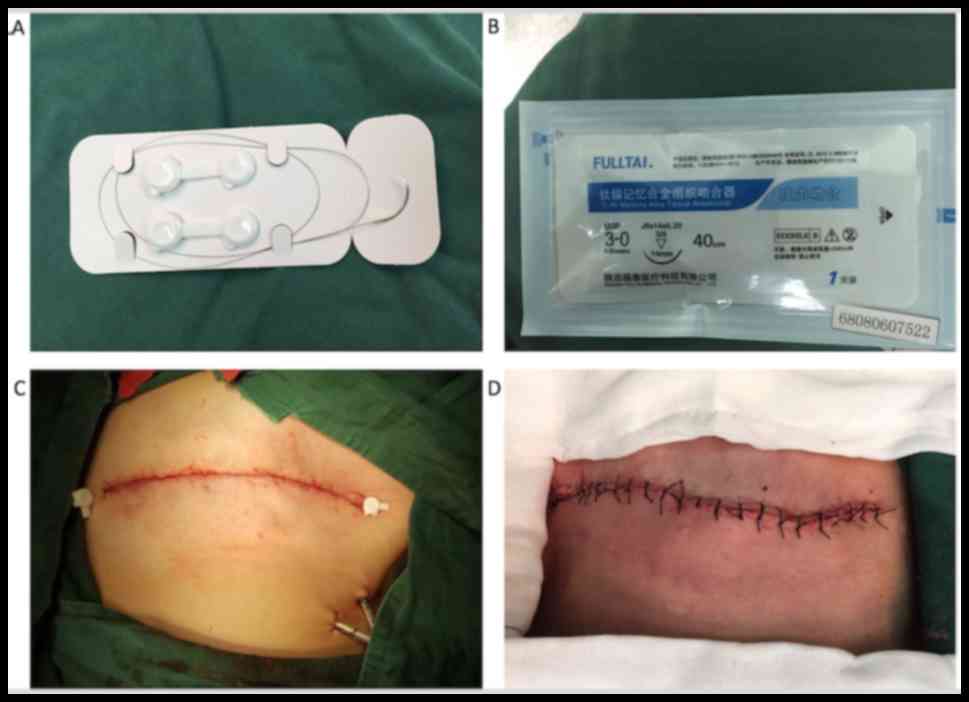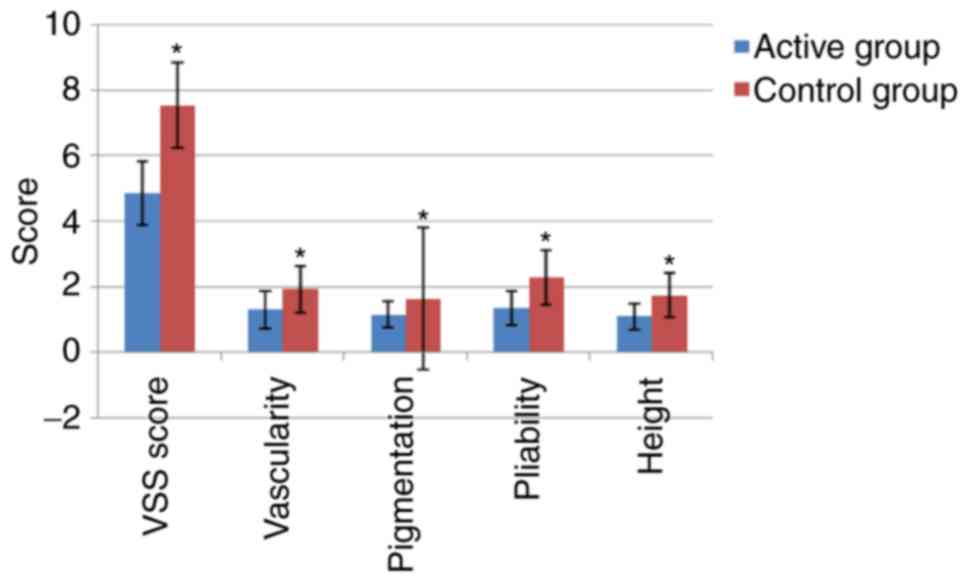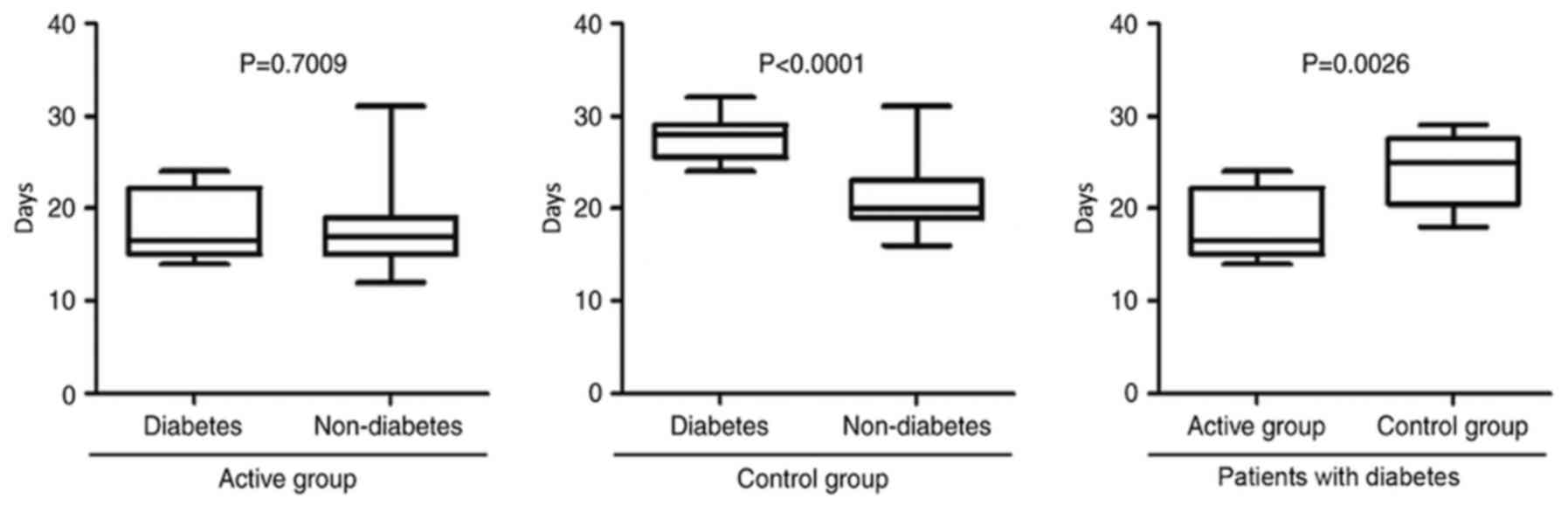|
1
|
Akram M and Siddiqui SA: Breast cancer
management: Past, present and evolving. Indian J Cancer.
49:277–282. 2012. View Article : Google Scholar : PubMed/NCBI
|
|
2
|
Sehl M, Lu X, Silliman R and Ganz PA:
Decline in physical functioning in first 2 years after breast
cancer diagnosis predicts 10-year survival in older women. J Cancer
Surviv. 7:20–31. 2013. View Article : Google Scholar : PubMed/NCBI
|
|
3
|
Derks MG, de Glas NA, Bastiaannet E, de
Craen AJ, Portielje JE, van de Velde CJ, van Leeuwen FE and Liefers
GJ: Physical functioning in older patients with breast cancer: A
prospective cohort study in the TEAM trial. Oncologist. 7:946–953.
2016. View Article : Google Scholar
|
|
4
|
Joyce CW, Murphy S, Murphy S, Kelly JL and
Morrison CM: Scar wars: Preferences in breast surgery. Arch Plast
Surg. 42:596–600. 2015. View Article : Google Scholar : PubMed/NCBI
|
|
5
|
Zhang ZT, Zhang HW, Fang XD, Wang LM, Li
XX, Li YF, Sun XW, Carver J, Simpkins D, Shen J and Weisberg M:
Cosmetic outcome and surgical site infection rates of antibacterial
absorbable (Polyglactin 910) suture compared to Chinese silk suture
in breast cancer surgery: A randomized pilot research. Chin Med J
(Engl). 124:719–724. 2011.PubMed/NCBI
|
|
6
|
Ünsal MG, Dural AC, Çelik MF, Akarsu C,
Başoğlu İ, Dilege ME, Kapan S and Alış H: The adaptation process of
a teaching and research hospital to changing trends in modern
breast surgery. Ulus Cerrahi Derg. 31:34–38. 2014.PubMed/NCBI
|
|
7
|
Peyser PM, Abel JA, Straker VF, Hall VL
and Rainsbury RM: Ultraconservative skin-sparing ‘keyhole’
mastectomy and immediate breast and areola reconstruction. Ann R
Coll Surg Engl. 82:227–235. 2000.PubMed/NCBI
|
|
8
|
Shrotria S: The periareolar incision -
gateway to the breast! Eur J Surg Oncol. 27:601–603. 2001.
View Article : Google Scholar : PubMed/NCBI
|
|
9
|
Wang J, Zhang YF, Wang X, Wang J, Yang X,
Gao YQ and Fang Y: Treatment outcomes of occult breast carcinoma
and prognostic analyses. Chin Med J (Engl). 126:3026–3029.
2013.PubMed/NCBI
|
|
10
|
Hoeller U, Kuhlmey A, Bajrovic A, Grader
K, Berger J, Tribius S, Fehlauer F and Alberti W: Cosmesis from the
patient's and the doctor's view. Int J Radiat Oncol Biol Phys.
57:3452003. View Article : Google Scholar : PubMed/NCBI
|
|
11
|
O'Kane S: Wound remodeling and scarring. J
Wound Care. 11:296–299. 2002. View Article : Google Scholar : PubMed/NCBI
|
|
12
|
Truong PT, Lee JC, Soer B, Gaul CA and
Olivotto IA: Reliability and validity testing of the patient and
observer scar assessment scale in evaluating linear scars after
breast cancer surgery. Plast Reconstr Surg. 119:487–494. 2007.
View Article : Google Scholar : PubMed/NCBI
|
|
13
|
Neelakantan L, Zglinski JK, Frotscher M
and Eggeler G: Design and fabrication of a bending rotation fatigue
test rig for in situ electrochemical analysis during fatigue
testing of NiTi shape memory alloy wires. Rev Sci Instrum.
84:0351022013. View Article : Google Scholar : PubMed/NCBI
|
|
14
|
Kinoshita T, Takasugi M, Iwamoto E,
Akashi-Tanaka S, Fukutomi T and Terui S: Sentinel lymph node biopsy
examination for breast cancer patients with clinically negative
axillary lymph nodes after neoadjuvant chemotherapy. Am J Surg.
191:225–229. 2006. View Article : Google Scholar : PubMed/NCBI
|
|
15
|
Yamamoto T, Takahashi S, Ichihara K,
Hiyama Y, Uehara T, Hashimoto J, Hirobe M and Masumori N: How do we
understand the disagreement in the frequency of surgical site
infection between the CDC and Clavien-Dindo classifications? J
Infect Chemother. 21:130–133. 2015. View Article : Google Scholar : PubMed/NCBI
|
|
16
|
Li YJ, Huang XE and Zhou XD: Local breast
cancer recurrence after mastectomy and breast-conserving surgery
for Paget's disease: A meta-analysis. Breast Care (Basel).
9:431–434. 2014. View Article : Google Scholar : PubMed/NCBI
|
|
17
|
Ouldamer L, Bonastre J, Brunet-Houdard S,
Body G, Giraudeau B and Caille A: Dead space closure with quilting
suture versus conventional closure with drainage for the prevention
of seroma after mastectomy for breast cancer (QUISERMAS): Protocol
for a multicenter randomized controlled trial. BMJ Open.
6:e0099032016. View Article : Google Scholar : PubMed/NCBI
|
|
18
|
MacFater H, MacFater W, Hill A and Lill M:
Individualised follow-up booklets improve recall and satisfaction
for cancer patients. N Z Med J. 130:39–45. 2017.PubMed/NCBI
|
|
19
|
Allinson VM and Dent J: Supportive care
after breast cancer surgery. Nurs Times. 110:20–23. 2014.PubMed/NCBI
|
|
20
|
Pauline T, Truong F, Yong CM, Hayashi A,
Runkel JA, Phillips T and Olivotto IA: Standardized assessment of
breast cancer surgical scars integrating the vancouver scar scale,
short-form mcgill pain questionnaire and patients' perspectives.
Plast Reconstr Surg. 116:1291–1299. 2005. View Article : Google Scholar : PubMed/NCBI
|
|
21
|
Nedelec B, Shankowsky HA and Tredget EE:
Rating the resolving hypertrophic scar: Comparison of the vancouver
scar scale and scar volume. J Burn Care Rehabil. 21:205–212. 2000.
View Article : Google Scholar : PubMed/NCBI
|
|
22
|
Ursaru M, Jari I, Popescu R, Negru D, Naum
A and Scripcariu V: Multifactorial analysis of local and lymph node
recurrences after conservative or radical surgery for stage 0–II
breast cancer. Rev Med Chir Soc Med Nat Iasi. 118:1062–1067.
2014.PubMed/NCBI
|
|
23
|
Kaartinen IS, Välisuo PO, Bochko V,
Alander JT and Kuokkanen HO: How to assess scar hypertrophy - a
comparison of subjective scales and Spectrocutometry: A new
objective method. Wound Repair Regen. 19:316–323. 2011. View Article : Google Scholar : PubMed/NCBI
|
|
24
|
Zhao WX, Wang B, Yan SY and Zhang LY:
Strategy of points, lines and layers in needle assisted laparoscope
functional modified neck dissection through bilateral breast
approach. Zhonghua Wai Ke Za Zhi. 54:823–827. 2016.(In Chinese).
PubMed/NCBI
|
|
25
|
Liebl H and Kloth LC: Skin cell
proliferation stimulated by microneedles. J Am Coll Clin Wound
Spec. 4:2–6. 2012. View Article : Google Scholar : PubMed/NCBI
|
|
26
|
Guo J, Lin Q, Shao Y, Rong L and Zhang D:
miR-29b promotes skin wound healing and reduces excessive scar
formation by inhibition of the TGF-β1/Smad/CTGF signaling pathway.
Can J Physiol Pharmacol. 95:437–442. 2017. View Article : Google Scholar : PubMed/NCBI
|
|
27
|
Li J, Chen L, Cao C, Yan H, Zhou B, Gao Y,
Li Q and Li J: The long non-coding RNA LncRNA8975-1 is upregulated
in hypertrophic scar fibroblasts and controls collagen expression.
Cell Physiol Biochem. 40:326–334. 2016. View Article : Google Scholar : PubMed/NCBI
|
|
28
|
Li H, Yang L, Zhang Y and Gao Z:
Kaempferol inhibits fibroblast collagen synthesis, proliferation
and activation in hypertrophic scar via targeting TGF-β receptor
type I. Biomed Pharmacother. 83:967–974. 2016. View Article : Google Scholar : PubMed/NCBI
|
|
29
|
Kotaluoto S, Pauniaho SL, Helminen M,
Kuokkanen H and Rantanen T: Wound healing after open appendectomies
in adult patients: A prospective, randomised trial comparing two
methods of wound closure. World J Surg. 36:2305–2310. 2012.
View Article : Google Scholar : PubMed/NCBI
|
|
30
|
Koskela A, Kotaluoto S, Kaartinen I,
Pauniaho SL, Rantanen T and Kuokkanen H: Continuous absorbable
intradermal sutures yield better cosmetic results than
nonabsorbable interrupted sutures in open appendectomy wounds: A
prospective, randomized trial. World J Surg. 38:1044–1050. 2014.
View Article : Google Scholar : PubMed/NCBI
|
|
31
|
Paolini S, Morace R, Lanzino G, Missori P,
Nano G, Cantore G and Esposito V: Absorbable intradermal closure of
elective craniotomy wounds. Neurosurgery. 62 Suppl 2:ONS490–ONS492.
2008.PubMed/NCBI
|
|
32
|
Sorg H, Tilkorn DJ, Hager S, Hauser J and
Mirastschijski U: Skin wound healing: An update on the current
knowledge and concepts. Eur Surg Res. 58:81–94. 2017. View Article : Google Scholar : PubMed/NCBI
|
|
33
|
Nouvong A, Ambrus AM, Zhang ER, Hultman L
and Coller HA: Reactive oxygen species and bacterial biofilms in
diabetic wound healing. Physiol Genomics. 48:889–896. 2016.
View Article : Google Scholar : PubMed/NCBI
|
|
34
|
Reed GW, Salehi N, Giglou PR, Kafa R,
Malik U, Maier M and Shishehbor MH: Time to wound healing and major
adverse limb events in patients with critical limb ischemia treated
with endovascular revascularization. Ann Vasc Surg. 36:190–198.
2016. View Article : Google Scholar : PubMed/NCBI
|
|
35
|
Khamaisi M, Katagiri S, Keenan H, Park K,
Maeda Y, Li Q, Qi W, Thomou T, Eschuk D, Tellechea A, et al: PKCδ
inhibition normalizes the wound-healing capacity of diabetic human
fibroblasts. J Clin Invest. 126:837–853. 2016. View Article : Google Scholar : PubMed/NCBI
|













